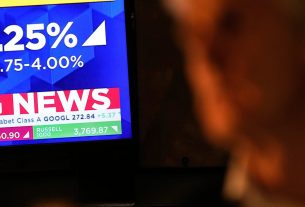|
Getting your Trinity Audio player ready...
|
Please note that we are not authorised to provide any investment advice. The content on this page is for information purposes only.
Following a massive influx of staking requests in a single day, Lido Finance, the popular liquid staking protocol, has implemented a safety feature to limit staking rates.
Looking Out for the Users
The announcement was made on Lido’s Twitter feed, which explained that the protocol activated a feature known as the “Staking Rate Limit” after witnessing a surge in stakes on February 25. According to Lido, the protocol experienced the largest single-day influx of staked Ether (ETH), with over 150,000 ETH staked on the platform. To protect users, it immediately activated the staking rate limit feature.
Lido protocol has registered its largest daily stake inflow so far with over 150,000 ETH staked. 🎉
Upon reaching this number, a curious (but important) protocol safety feature called Staking Rate Limit was activated.
Here’s how it works🧵👇 pic.twitter.com/ngBtWz7q18
— Lido (@LidoFinance) February 25, 2023
As explained further in the protocol, the Staking Rate Limit is a dynamic mechanism that kicks in whenever there is an unusually large amount of ETH staking inflows. Its role is to address potential side effects of this influx, such as reward dilution, without directly halting stake deposits.
Staking Rate Limit works by reducing the amount of staked Ether (stETH) that can be minted at any time, based on the past 24-hour deposit window. The capacity is then replenished on a block-by-block basis.
With a replenishing rate of approximately 6,200 ETH per hour, Lido is confident that this action will not impact users. However, it will primarily affect users who attempt to mint large amounts of stETH. As Lido explained, When users see an error message indicating that stETH cannot be minted, they can either try a smaller amount or wait for the replenishing capacity to catch up.
ETH Staking Becomes More Popular
According to Lido Finance’s website, over $8.9 billion ETH has been staked within the protocol – a significant upgrade from the $5.8 billion reported earlier this year. The high influx of ETH staking appears to be driven by the anticipation of Ethereum’s Shanghai upgrade, which is set to mark yet another chapter for the popular blockchain.
The Shanghai upgrade, which is scheduled to go live in the middle of March, is expected to bring additional scalability benefits to the Ethereum blockchain. These include optimal transaction speeds and lower costs, making Ethereum more suitable for development work and building decentralized applications (dApps).
The upgrade is also set to mark the first time that ETH users who staked their coins on the Ethereum Beacon Chain will be able to make withdrawals. This flexibility in staking could incentivize more people to join in, whether via staking directly on the Beacon Chain or by using liquid staking protocols like Lido.
A Spotlight on Crypto Staking’s Future
However, while staking is expected to ramp up during this time, it is also worth noting that regulators are finally paying attention to this expanding space.
Earlier this month, top crypto exchange Kraken was forced to enter into a $30 million settlement with the Securities and Exchange Commission (SEC) after the agency accused it of offering its staking program to American investors without proper approvals.
Since the announcement, investors and market participants have largely expressed concern about what appears to be yet another SEC crusade against the crypto space.
Speaking with Bloomberg, Jacob Blish, the head of business development at Lido’s decentralized autonomous organization (DAO), claimed that this action could eventually lead to a nationwide ban on crypto staking. And this could also pose uncertainties to the future of companies like Lido.
Although it is unlikely that a nationwide staking ban will be implemented, it seems obvious that regulatory attention has been turned to this market segment. And more changes could very well be on their way.



